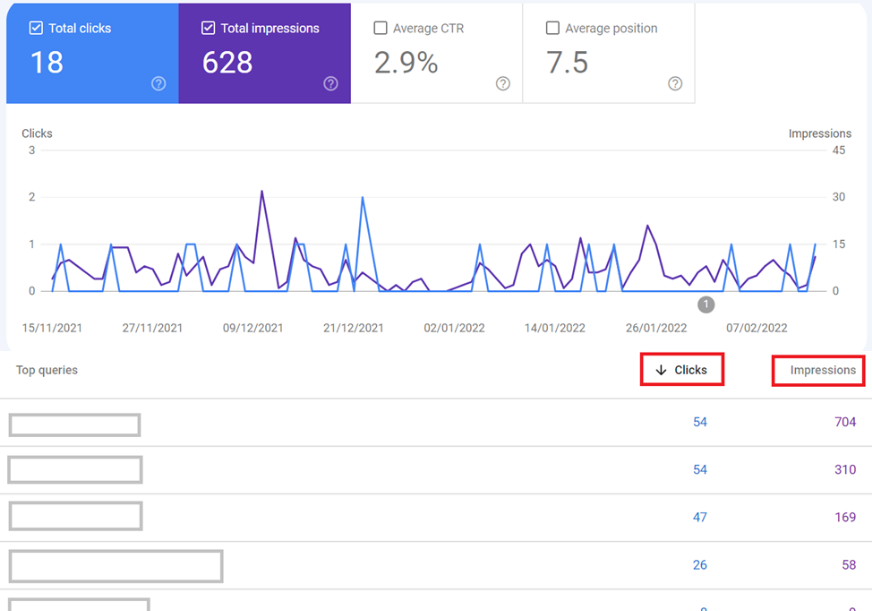Google's search engine is a complex algorithm that takes many different factors into account. Google evaluates the entire web every time it crawls, and updates its index of all web pages with a list of words and their frequency counts. Since we cannot know what Google's ranking algorithm is, we can only try to optimise our website's performance for Google's algorithm. In this article, we will explore 5 easy ways that you can use to rank higher on Google search results.
Step 1: Keyword research
Keyword research is an important part of search engine optimisation (SEO). This process helps to find keywords that are relevant to the content of the page and are likely to generate traffic for your website. The goal of keyword research is not just to rank higher on Google but also to provide visitors with what they are looking for. Google has its own set of rules for ranking websites based on keywords relevance, freshness, and popularity among other factors. Here is the exact process of how to come up with a list of keywords that will ultimately drive more traffic to your website:
- Identify missing opportunities
No doubt, you know how to use Google Search Console, so let’s find out which are the keywords that you are not currently optimising for. Head to Google Search Console – Performance tab.

By clicking on “Impressions” to sort from a higher number to lower, you can see which keywords are most frequently searched, and by setting “Clicks” to show you the results from lower to higher you will get a list of keywords that you can optimise within the content on the page to get more clicks.
-
Pay attention to Google suggest / autocomplete and related searches In case you are wondering what other queries your potential website visitors are looking for, make use of the Google suggestions and autocomplete option. When you type your keyword at the bottom of a search results page you will get list of related searches, this might help you to adjust your content on the page and increase keyword density.

-
LSI keywords
If this is the first time you hear about LSI, then here is a short explanation of why they are important. LSI stands for Latent Semantic Indexing, these are words and phrases which are related to the topic of your website; however, these are not the synonyms to your keywords. Using LSI, you help the search engine understand what your website content is all about leading to a higher ranking position on SERP. To discover LSI keywords, you can use different tools, such as, Lsigraph. This system searches for keywords within your industry/niche with a high engagement rate. Another important suggestion is to place your keywords towards the beginning of the sentences.
Step 2: Adapt your content to the search intent
There are two major reasons behind an online query: search intent and search terms. Search intent is the reason for a user coming to your website specifically for the desired action, while search terms are the words that make up a user’s query.
To optimise content for SEO, you need to understand what your audience is looking for and how they would like to interact with you, and then tailor your content accordingly. If your audience is not finding relevant information from your site, there’s a good chance that they will bounce from the page and go elsewhere.
Search intent categories and examples identified by SEMrush:
Navigational intent: searchers intending to find a specific site or page. For example, “vans sneakers”
Commercial intent: searchers looking to investigate products, services, or brands. These commonly have an intent to complete an action or purchase sometime in the future. For example, “best sneakers for walking”
Transactional intent: searchers intending to complete an action or purchase (aka buyer intent keywords). For example, “buy sneakers online”

Source: https://www.semrush.com/blog/analyze-search-intent-instantly/
Step 3: Publish only high quality content
Content marketing is an effective way to get more traffic to your website or blog. The content you create should be engaging and informative enough that people will want to share it with their friends and family. A great blog post can be shared by thousands of users, and if you have a lot of backlinks pointing to your website or blog, it will help with SEO. Keep in mind that there is quite a strong correlation between the amount of content on the page and its ranking. A long article does not necessarily position your website on the 1st page, but according to a HubSpot study from 2021, the ideal blog post length for SEO should be 2,100-2,400 words. As always, keep in mind your target audience and its preferences.
High quality content is more than just about the written article, usability expert Jakob Nielsen wrote that the average user reads at most 20 to 28 percent of words during an average visit. Therefore, Google recently said that bolded text can help SEO, it is not a major ranking factor, however, it helps search engine rankings to understand the semantic meaning of your page content. Visual content increases message association and enhances the overall design of your website. It's important to use visual content that is organised, easy to read, and consistent with your brand image. This can be accomplished by choosing images, infographics and videos that are relevant to the topic at hand and integrating them into your text in a meaningful way.
Step 4: On site SEO
After you have complied a list of keywords that work best for your website and you have adapted content as per keywords analysis and search intent, you can proceed to make on site SEO changes. On site SEO includes aligning specific page elements:
- title tags
- alt tags
- urls
- meta description
- headings
- internal links
- keywords density
- images
- mobile friendliness
Do you want to know more how to optimise on site SEO, get in touch with us by clicking here.
Step 5: Technical SEO
Most websites are built with the most updated CMS software. Technical SEO is not an issue for these sites, however always check your page speed and mobile optimisation. These factors can hurt your rankings. It's been said that websites with load speed of more than 3 seconds have higher bounce rates. You can run test on your website using Google tools, PageSpeed Insights and Mobile - Friendly test tool.
Our team of SEO specialists at Deloitte Digital can help you plan and implement your SEO strategy. Get in touch today!

